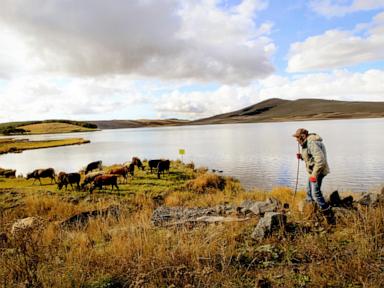New simulations in three lakeside communities have revealed potentially fatal threats to residents, visitors and workers in flight — particularly during the coinciding peaks of tourism and wildfire seasons.
Severe wildfires have become an increasing threat to the entire Lake Tahoe region, where fire-prone forests give way to vacation hotspots and crowded roadways.
During the 2021 Caldor Fire, an infernal blaze burned nearly 222,000 acres over 69 days — destroying more than 1,000 structures and requiring more than 50,000 people to flee.
The independent analysis, commissioned by the group TahoeCleanAir.org, focused on three areas: Douglas, West Shore and Eldorado.
Approximately 23,000 people reside in the bounds of the last region, the El Dorado/South Lake Study Area, which includes several communities and parts of Lake Tahoe's biggest city, South Lake.
In addition to locals, there are more than 6,000 lodging rooms and camp sites in this region, as well as more than 2,300 short-term rentals, according to the report.
Catering to this area’s hundreds of thousands of annual tourists are high concentrations of shopping, dining and recreation activities — served by limited roadway capacity, the authors warned.
Depending on traffic conditions and road closures — which could create choke points — AI-powered simulations found that it could take between 8.5 and 11 hours to evacuate this summertime hotspot.
The Douglas zone, on the Nevada side of the lake, has a local population that is about 5,406, as well as nearly 3,000 lodging rooms and more than 900 short-term rentals for seasonal vacationers, per the report.
The researchers found that depending on traffic conditions, it could take 5 to 7.5 hours to evacuate this popular area.
As for the West Shore, where researchers estimated a local population of about 4,346, the report found that fleeing this area could take from 4 to 8.5 hours.
The region has only about 483 campsites and lodging rooms and 500 short-term rentals, but throngs of annual visitors still frequent the West Shore, according to the report.
At the same time, the relatively isolated lakeshore communities located in this zone are accessible only by narrow neighborhood roads leading to two evacuation routes, the authors warned.
"The carrying capacity in the Tahoe Basin is already beyond strained," Doug Flaherty of TahoeCleanAir.org said in a statement.
Flaherty, a former southern California Fire Combat Battalion Chief, emphasized a "need for Tahoe policy makers to provide better, more transparent public safety planning."
"Officials need to take a reality-based approach to land use planning decisions to help avoid issues experienced in other major wildfires,” he added.




















